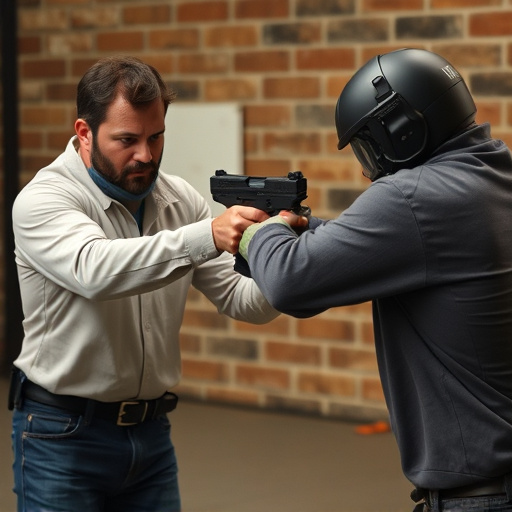Taser deployment, a non-lethal law enforcement tool, varies in impact by model, discharge duration, and individual factors. The most concealable stun gun designs offer discreet self-defense with powerful but subtle deterrence. While marketed as safer alternatives to firearms, Tasers have average incapacitation times around 3 seconds, extending up to 5+ seconds with certain models, posing health risks for individuals with pre-existing conditions. The duration of paralysis depends on factors like stun gun design and target characteristics, with more concealable designs potentially prolonging immobilization. Widespread adoption raises legal, ethical, and policy concerns, necessitating clear guidelines, de-escalation protocols, and data collection on deployment outcomes and paralysis durations. Balancing power and discreetness in advanced Taser designs can enhance safety by mitigating unauthorized use while maintaining their intended purposes for law enforcement and self-defense.
“Uncovering the complexities of taser deployment and its aftermath, this article delves into the critical issue of paralysis duration. Understanding the impact of these devices requires examining various factors, from physiological reactions to legal implications. We explore how the design of stun guns, particularly focusing on the most concealable options, influences the length of paralysis. Through case studies, we present real-world scenarios, highlighting the need for enhanced safety measures in law enforcement practices.”
- Understanding Taser Deployment and Its Impact
- Factors Influencing Paralysis Duration
- The Role of Stun Gun Design: Most Concealable Options
- Legal Considerations and Policy Implications
- Case Studies: Real-World Experiences
- Enhancing Safety Measures for Law Enforcement
Understanding Taser Deployment and Its Impact
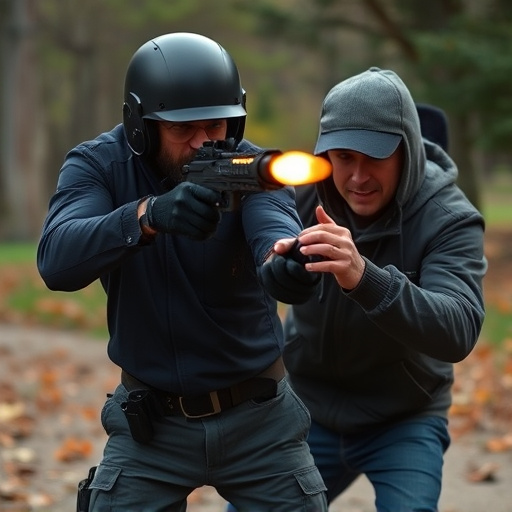
Taser deployment is a significant development in non-lethal law enforcement tools, designed to temporarily incapacitate individuals through electrical impulsification. These devices emit two thin probes connected to wires that deliver a strong electric current, causing muscular contractions and temporary paralysis. The impact of Taser deployment can vary depending on the model, duration of discharge, and individual factors like body mass and physical condition. Interestingly, the most concealable stun gun design has emerged as a preferred choice for discreet self-defense, offering users a subtle yet powerful option to deter potential threats.
While Tasers are marketed as safer alternatives to firearms, the duration of paralysis they induce is essential to consider. Studies suggest that the average incapacitation time is around 3 seconds, but this can extend up to 5 seconds or more with certain models. Prolonged exposure may lead to increased risk for individuals with pre-existing health conditions, highlighting the importance of understanding the specific implications of Taser deployment in various scenarios.
Factors Influencing Paralysis Duration

Paralysis duration from Taser deployment can vary greatly, influenced by several factors. One key consideration is the design of the stun gun itself, particularly its most concealable aspects. Compact and discreetly designed Tasers may deliver shorter bursts of paralysis, making them harder to detect but potentially resulting in quicker recovery times for targets. Conversely, more powerful models designed for law enforcement use could induce prolonged immobilization due to their increased current output.
Another significant factor is the target’s physical condition and size. Larger individuals or those with higher muscle mass might experience longer durations of paralysis compared to smaller, leaner people. Environmental conditions, such as temperature and humidity, can also play a role, as these factors can affect the body’s ability to dissipate electrical current and thus prolong the effects of the stun.
The Role of Stun Gun Design: Most Concealable Options
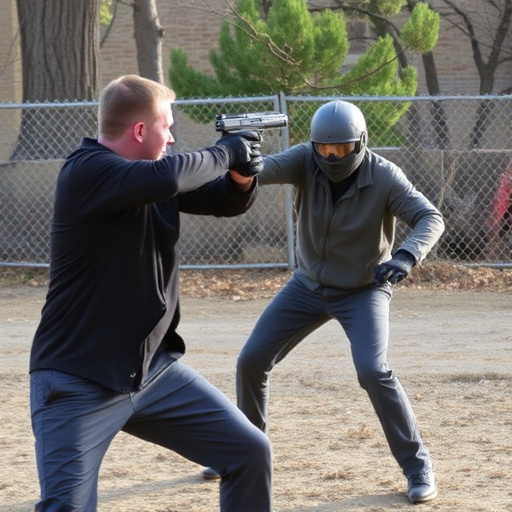
The design of a stun gun plays a significant role in determining its concealability and, consequently, the length of time an individual might remain paralyzed after deployment. Modern stun guns come in various forms, but those designed for concealment stand out as particularly useful for self-defense scenarios where surprise and discreteness are crucial. These devices often mimic the appearance of everyday objects like flashlights, keychains, or even cell phones, making them easily hidden away without raising suspicion.
Among the most concealable stun gun designs, compact and lightweight models excel in offering both discretion and power. They are typically small enough to fit comfortably in a pocket, purse, or even a vest holster, ensuring that users can quickly access them when needed. This portability not only facilitates surprise attacks but also extends the duration of paralysis, as individuals caught off guard have less time to react and fight back.
Legal Considerations and Policy Implications

The deployment of Tasers and the subsequent paralysis duration has significant legal considerations. With the increasing prevalence of stun guns, especially those designed to be the most concealable, there is a growing need for clear guidelines on their use by law enforcement. The potential for prolonged paralysis raises ethical questions about when and how these devices should be employed, particularly in situations where individuals may not pose an immediate threat. Courts are increasingly scrutinizing the use of Tasers to ensure compliance with constitutional rights, as cases challenging excessive force have gained prominence.
Policy implications extend beyond ensuring fair use; they also encompass public safety and accountability. Departments must implement protocols that balance the need for crowd control or neutralizing suspects with the risk of adverse effects. Training programs should emphasize the importance of de-escalation techniques and the recognition of medical distress, especially in individuals with pre-existing health conditions. Additionally, comprehensive data collection on Taser deployments, including outcomes and duration of paralysis, is crucial for evaluating policy effectiveness and maintaining transparency.
Case Studies: Real-World Experiences
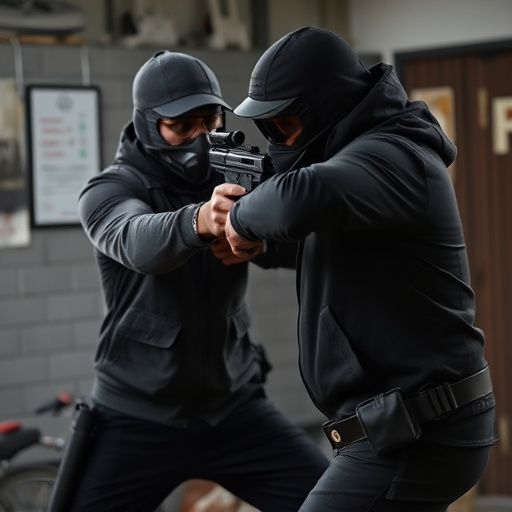
Paralysis durations from taser deployment vary widely, influenced by factors such as the model used, the electrical current delivered, and individual physiological differences. Case studies from real-world experiences offer valuable insights into these variables. For instance, a study analyzing police use of tasers in various jurisdictions found that the average paralysis duration was approximately 3 seconds for low-voltage settings, with some individuals experiencing brief incapacitation lasting just over a second, while others were immobilized for up to 5 seconds or longer.
These variations underscore the importance of considering not only the power output but also the design features of tasers, such as the most concealable stun gun design. Concealability plays a role in both tactical effectiveness and public perception. Advanced designs that balance power with discreetness can enhance safety by reducing the risk of unauthorized use while maintaining their intended purpose for law enforcement and self-defense applications.
Enhancing Safety Measures for Law Enforcement
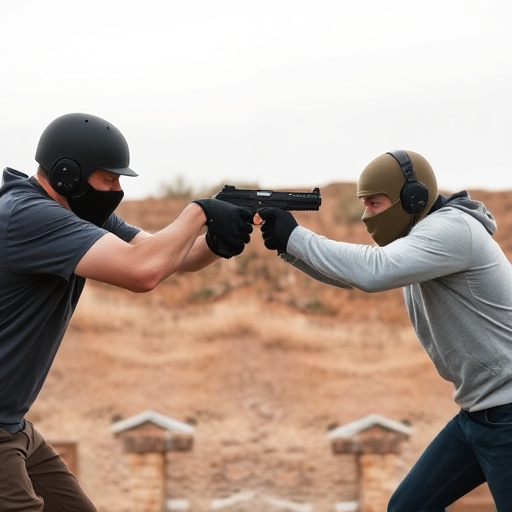
In recent years, there has been a growing emphasis on enhancing safety measures within law enforcement practices, especially regarding the use of force. One area that demands attention is the duration and impact of paralysis caused by stun gun deployments. While stun guns have traditionally been considered less lethal alternatives to firearms, their effectiveness and potential risks are now being scrutinized. The focus has shifted towards developing safer, more concealed designs, such as the most concealable stun gun, to ensure officers can respond swiftly while minimizing harm to both suspects and bystanders.
These advancements aim to strike a delicate balance between officer protection and public safety. Researchers and industry experts are exploring innovative solutions, including improved electrode placement and advanced current delivery systems, to reduce the duration of paralysis. The goal is to minimize the time a subject remains paralyzed, thereby decreasing potential secondary risks and ensuring a quicker resolution during critical incidents. By embracing these technological advancements, law enforcement agencies can enhance their safety protocols and contribute to more effective and secure communities.
The exploration of taser deployment and its impact on paralysis duration reveals a complex interplay between hardware design, user training, and situational factors. As demonstrated by case studies and legal considerations, minimizing deployment time and mitigating adverse effects are paramount for law enforcement safety and public trust. Moving forward, focusing on the most concealable stun gun designs that balance effectiveness with reduced risk can contribute to more peaceful and secure interactions. Enhancing safety measures through ongoing research, rigorous training, and policy updates is essential to ensure these tools serve their intended purpose without causing prolonged or unnecessary harm.
